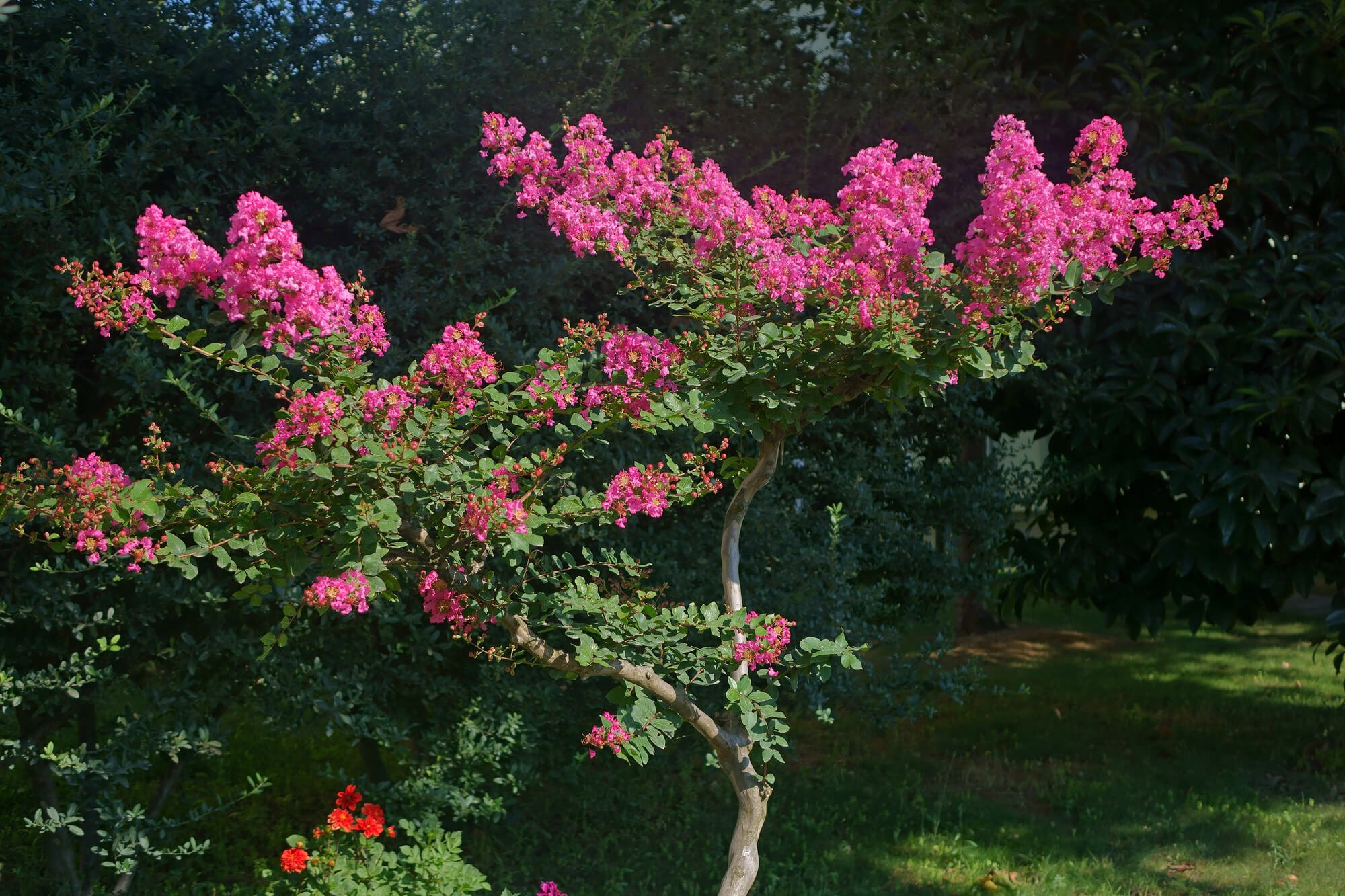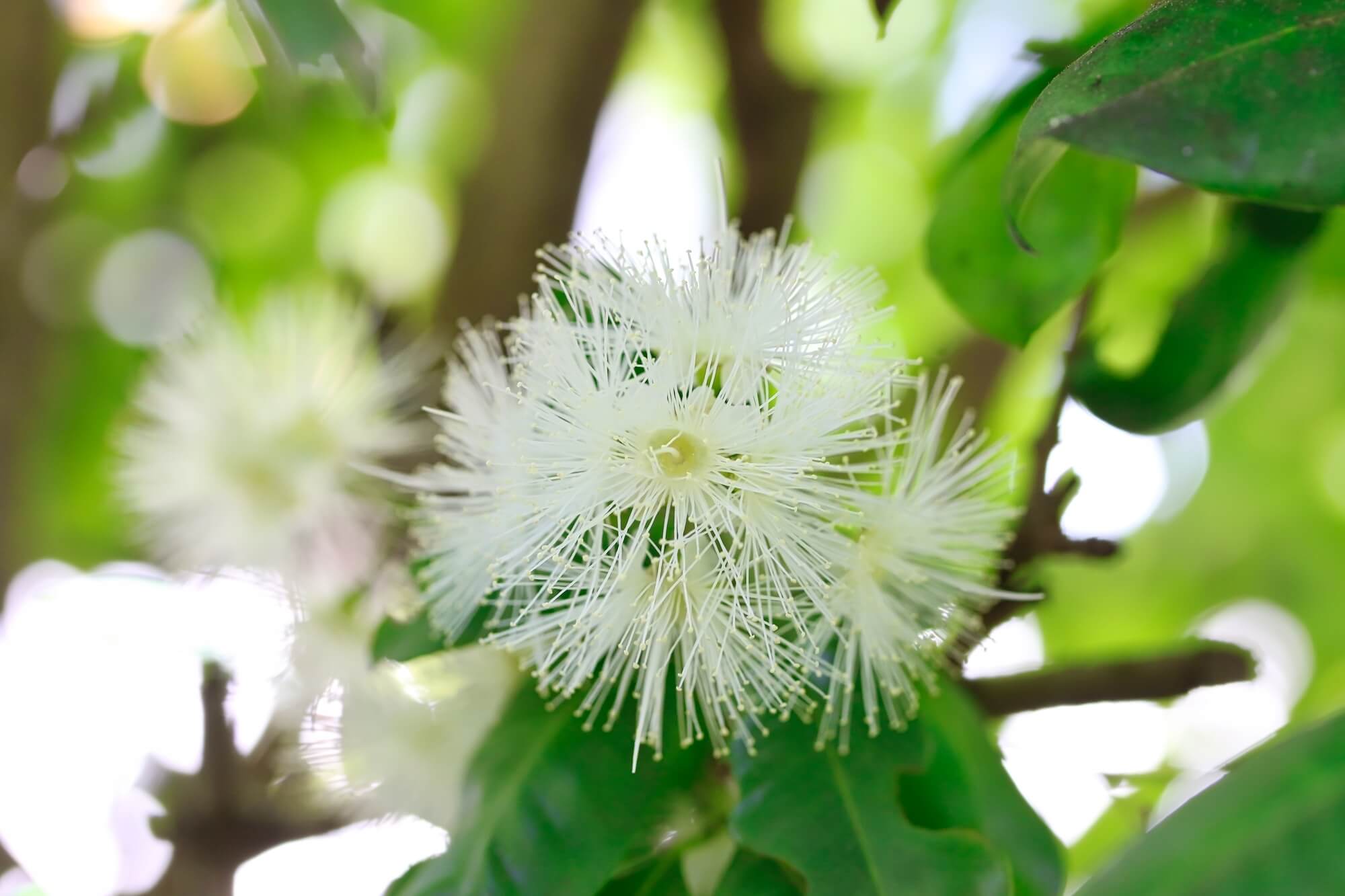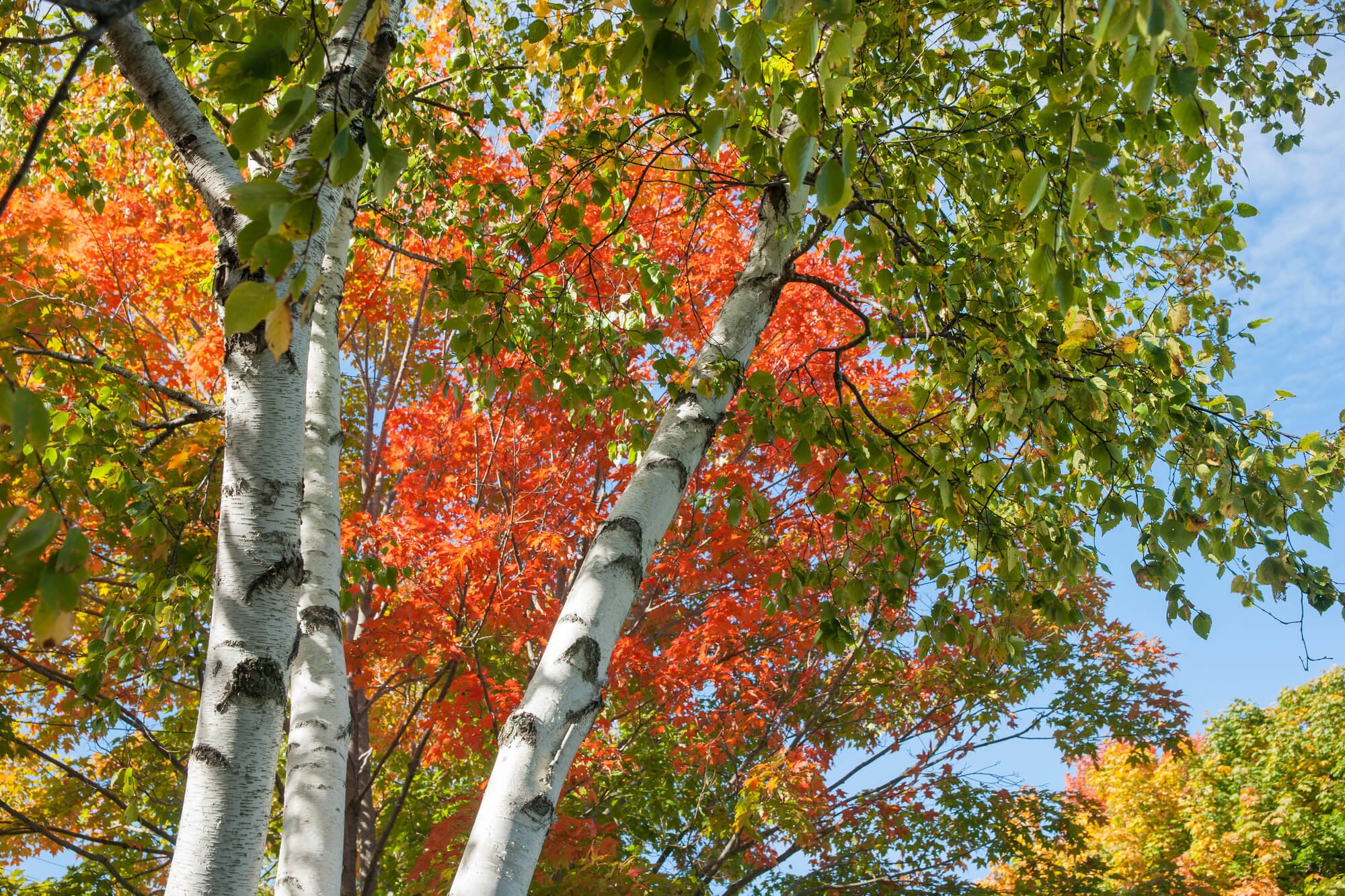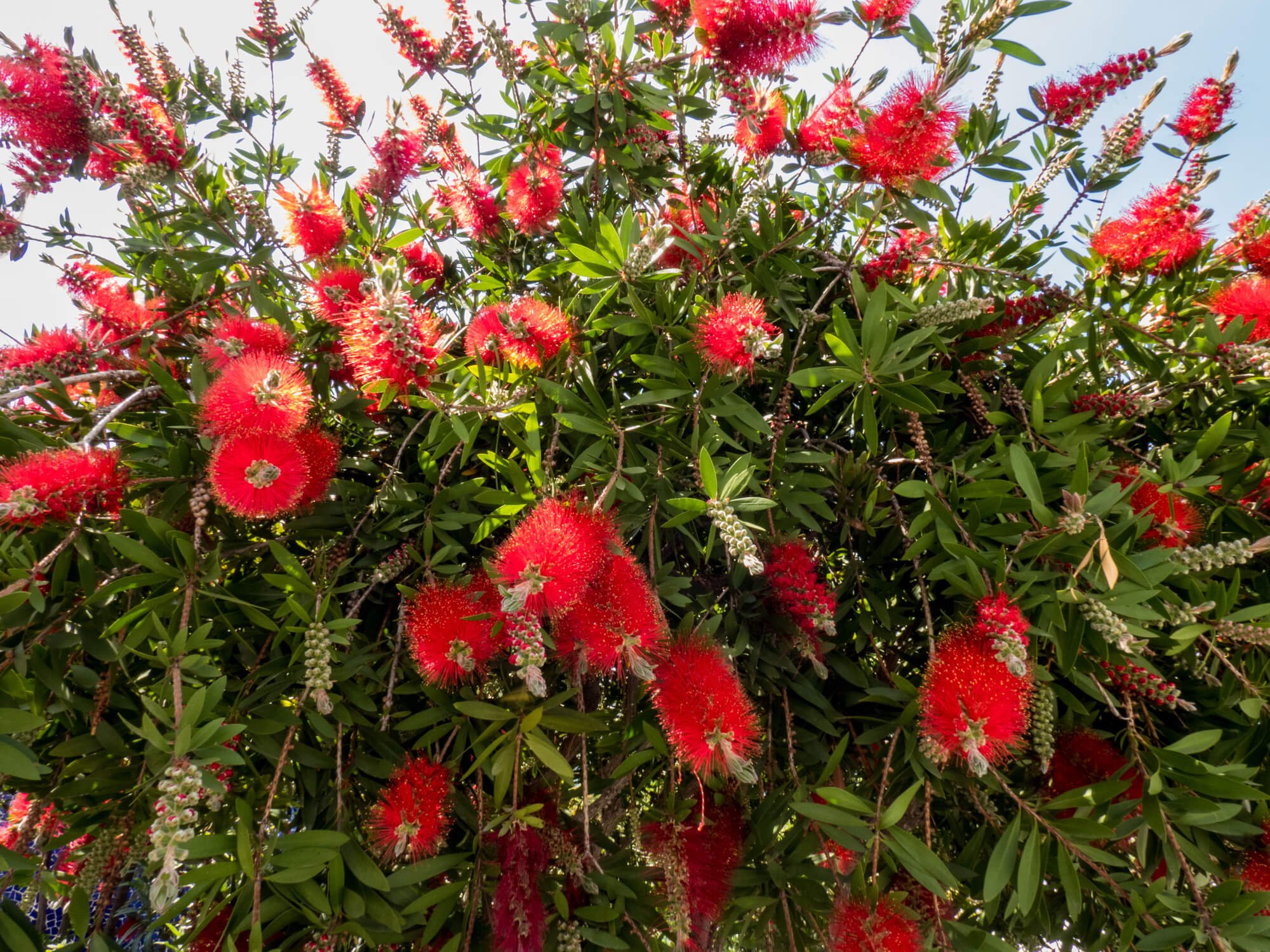You might think a small garden limits your options for lush, beautiful trees. But you’ll be pleased to know that’s not the case, especially in Australia. There’s a myriad of tree species that are just perfect for your small outdoor space. These trees for small Australian gardens are not only beautiful and low maintenance but also beneficial to the environment.
Among the top picks is the Crepe Myrtle with its stunning summer blooms, the versatile Lilly Pilly, the elegant Silver Birch known for its distinctive bark, the durable Bottlebrush, and the charming Japanese Maple with its brilliant autumn colours. Each of these trees has its own unique charm, proving that even small gardens in Australia can have a rich and diverse array of plant life.
Get ready to transform your garden into a vibrant paradise with these top 5 trees. Stick around, and we’ll delve into why these are the best choices for your small Australian garden.


The Beauty of the Crepe Myrtle
You’ll be absolutely enchanted by the beauty of the Crepe Myrtle, a perfect tree for your small Australian garden. It not only adds a pop of colour but is also low maintenance. A native of Asia, this resilient tree has effortlessly adapted to the Australian climate, making it a favourite among discerning gardeners.
The blooming season of the Crepe Myrtle is a spectacle to behold. From summer to autumn, it proudly displays vibrant clusters of pink, red, purple, or white flowers. These colour variations allow you to choose the perfect shade to complement the aesthetics of your garden.
When it comes to planting locations, the Crepe Myrtle is versatile. While it thrives in full sun, it can also tolerate partial shade. You’ll notice it flourishes best in well-drained soil and can withstand the sometimes harsh Australian weather conditions, thanks to its good disease resistance.
Pruning tips are simple for this little gem. For a bushier appearance, prune your Crepe Myrtle in late winter. However, be cautious not to over-prune as it can affect the next season’s bloom. The Crepe Myrtle’s combination of beauty, resilience, and low maintenance requirements make it a top choice for small Australian gardens.

The Versatility of the Lilly Pilly
If you’re after versatility, look no further than the Lilly Pilly. This native Australian tree is an excellent choice for small gardens due to its compact size and abundant foliage.
Lilly Pilly trees adapt well to various soil conditions, but they tend to thrive best in well-drained, fertile soil. So, before planting, ensure your soil meets these requirements or consider amending it to create a more suitable environment.
Lilly Pilly’s are pretty low-maintenance trees, but they do appreciate some care. They’re best pruned in early spring or late winter using specific pruning techniques to maintain their shape and promote dense growth. Make sure to remove any dead or diseased branches to keep your tree healthy.
Watering needs vary depending on the weather, but generally, a deep watering once a week should suffice. Lilly Pilly trees can attract pests like psyllids, so effective pest control is vital. Regular inspection and the use of natural insecticides can help keep your tree pest-free.
With these planting tips and maintenance practices, the Lilly Pilly can be a standout feature in your small Australian garden. It’s a tree that offers both aesthetic appeal and practical benefits.


The Elegance of the Silver Birch
Moving on from the versatile Lilly Pilly, let’s explore the elegance that a Silver Birch can bring to your compact outdoor space. Known for its slender silhouette and distinctive white bark, this tree is a striking addition to any garden, offering a visual appeal that changes with each season.
The Silver Birch has specific soil requirements, preferring well-drained, moderately fertile soil. It’s best to plant it in a location that gets plenty of sun, as it thrives in bright, direct light. While it’s somewhat drought tolerant, it will appreciate regular watering during dry periods.
Your Silver Birch will benefit from occasional pruning. Proper pruning techniques can enhance its natural shape and encourage healthy growth. Remember, the best time to prune is during late winter or early spring when the tree is dormant.
As the seasons change, so does the beauty of the Silver Birch. In spring, its new leaves are a vibrant green. Come autumn; they transform into a stunning golden hue. With its manageable size and graceful form, the Silver Birch is an elegant choice that adds year-round interest to small Australian gardens. It’s a tree that truly brings the changing seasons to your doorstep.


The Durability of the Bottlebrush
Switching gears, let’s delve into the robustness of the Bottlebrush, a tree that’s as tough as it is beautiful. Native to Australia, this resilient gem thrives in a variety of soil types, which adds to its durability factors. Whether your garden’s soil is clayey or sandy, the Bottlebrush adapts well, although well-drained, slightly acidic soil gives it the best start.
When planting, choose a sunny spot, as this tree loves the light. Dig a hole twice the size of the root ball, place the tree in, and backfill with soil, ensuring you don’t bury the trunk.
In terms of maintenance, the Bottlebrush benefits from regular pruning. This not only helps in maintaining its size for your small garden but also encourages denser growth and more prolific flowering. Pruning techniques involve removing any dead or diseased branches, as well as cutting back up to one-third of the growth annually.
Despite its toughness, the Bottlebrush isn’t immune to common pests. Keep an eye out for scale insects and treat them promptly to maintain the health of your tree. With the right care, this durable tree will be a standout feature in your small Australian garden.


The Charm of the Japanese Maple
Next up on our list is the enchanting Japanese Maple, a tree that’ll add a touch of elegance to your outdoor space. This tree is not only known for its magnificent autumn colours but also for its profound symbolism in various cultures.
The symbolism of the Japanese maple: This tree represents great blessings and peace in Japanese culture. It’s seen as a symbol of grace and serenity, making it an ideal choice for a tranquil garden setting.
The different varieties of Japanese Maple: There are hundreds of varieties available, each with its unique appeal. Some are dwarf varieties perfect for small spaces, while others boast unusual leaf shapes or vibrant colourations.
The best soil conditions for Japanese Maple: These trees prefer well-draining, slightly acidic soil. They’re relatively hardy, but appropriate soil conditions can ensure optimal growth and health.
Pruning tips for Japanese Maple: Pruning should be minimal and mainly done to maintain the tree’s shape or remove dead wood. It’s best performed in late summer or early autumn when the tree’s sap isn’t flowing as freely.
Remember, the autumn colours of the Japanese Maple are a sight to behold, making it a worthy addition to your small Australian garden. So, consider this wonderful tree as you plan your garden layout.
Frequently Asked Questions
What other small garden-friendly trees are native to Australia besides the ones mentioned?
Here are five additional options:
- Wattle (Acacia species): Wattles are very diverse, with species that range from shrubs to large trees. Some smaller varieties suitable for gardens include Acacia cognata ‘Limelight’ or ‘Green Mist’, which grow to about 1m tall.
- Banksia (Banksia species): There are many small Banksias suitable for home gardens. Banksia spinulosa ‘Birthday Candles’ is a popular compact variety that grows to about 1m tall and wide. It has beautiful orange flowers that attract birds.
- Macadamia (Macadamia integrifolia): This tree is known for its tasty nuts, but it also makes a beautiful ornamental tree. There are dwarf varieties available that reach around 4 metres tall, making them suitable for smaller gardens.
- Kangaroo Paw (Anigozanthos): Technically a perennial, not a tree, but Kangaroo Paw can add height and visual interest to a small garden similar to a small tree. They have unique and striking flower stalks that come in a variety of colours, including red, green, yellow, and pink.
- Woolly Bush (Adenanthos sericeus): This is a soft, silvery bush that can be pruned into a small tree. It’s quite hardy and prefers dry, sandy soils.
Remember, when selecting trees or plants for your garden, consider your local conditions and the specific needs of each species. Choose plants that will thrive in your local climate and soil conditions.
How can I maximize the growth of these trees in a small garden space?
To maximize tree growth in small spaces, adhere to optimal watering schedules and regular application of fertilizers. Practice proper tree pruning techniques, ensure ample sunlight, and understand the benefits of mulching.
What are some common pests or diseases that affect these types of trees, and how can they be prevented or treated?
Identifying pests early, using organic pesticides, and adopting proper pruning techniques can prevent most diseases. Choose disease-resistant species for stronger tree immunization. If issues persist, consult a local arborist for professional advice.
How does the climate and soil condition in different parts of Australia affect the growth and health of these trees?
Australia’s rainfall patterns, sunlight needs, and your soil’s condition greatly impact tree health. Root systems thrive with proper mulching and a sensible watering schedule. Adjust these factors to suit local conditions for optimal growth.
Conclusion
So, you see, even small Aussie gardens can be home to a rich variety of trees. From the vibrant Crepe Myrtle to the elegant Silver Birch, there’s no shortage of options. Consider the durable Bottlebrush or the charming Japanese Maple. With their varied colours, shapes, and sizes, these trees won’t just beautify your garden; they’ll also thrive in our diverse climates.
Go on, make your small garden a lush, green oasis with these ideal trees for small Australian gardens.

Social